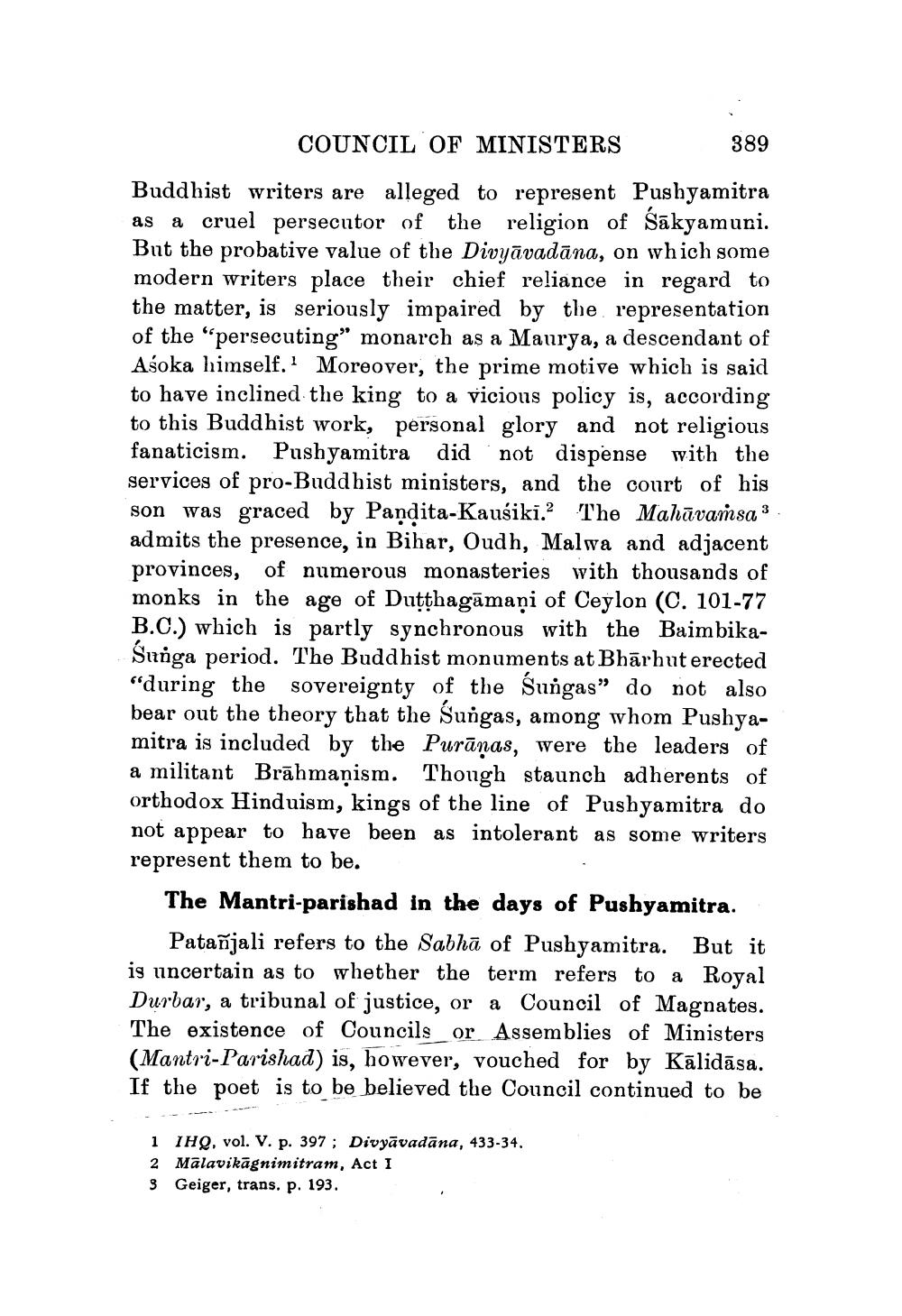________________
COUNCIL OF MINISTERS
389
Buddhist writers are alleged to represent Pushyamitra as a cruel persecutor of the religion of Sākyamuni. But the probative value of the Divyāvadāna, on which some modern writers place their chief reliance in regard to the matter, is seriously impaired by the representation of the "persecuting" monarch as a Maurya, a descendant of Asoka himself. Moreover, the prime motive which is said to have inclined the king to a vicious policy is, according to this Buddhist work, personal glory and not religious fanaticism. Pushyamitra did not dispense with the services of pro-Buddhist ministers, and the court of his son was graced by Pandita-Kausiki.? The Mahāvamsa 3 admits the presence, in Bihar, Oudh, Malwa and adjacent provinces, of numerous monasteries with thousands of monks in the age of Dutthagāmaņi of Ceylon (C. 101-77 B.C.) which is partly synchronous with the BaimbikaSunga period. The Buddhist monuments at Bhārhut erected "during the sovereignty of the Sungas” do not also bear out the theory that the Surgas, among whom Pushyamitra is included by the Purāņas, were the leaders of a militant Brāhmaṇism. Though staunch adherents of orthodox Hinduism, kings of the line of Pushyamitra do not appear to have been as intolerant as some writers represent them to be.
The Mantri-parishad in the days of Pushyamitra.
Patañjali refers to the Sabhā of Pushyamitra. But it is uncertain as to whether the term refers to a Royal Durbar, a tribunal of justice, or a Council of Magnates. The existence of Councils_or Assemblies of Ministers (Mantri-Parishad) is, however, vouched for by Kālidāsa, If the poet is to be believed the Council continued to be
1 HQ, vol. V. p. 397 ; Divyāvadāna, 433-34. 2 Malavikāgnimitram, Act I 3 Geiger, trans. p. 193.




